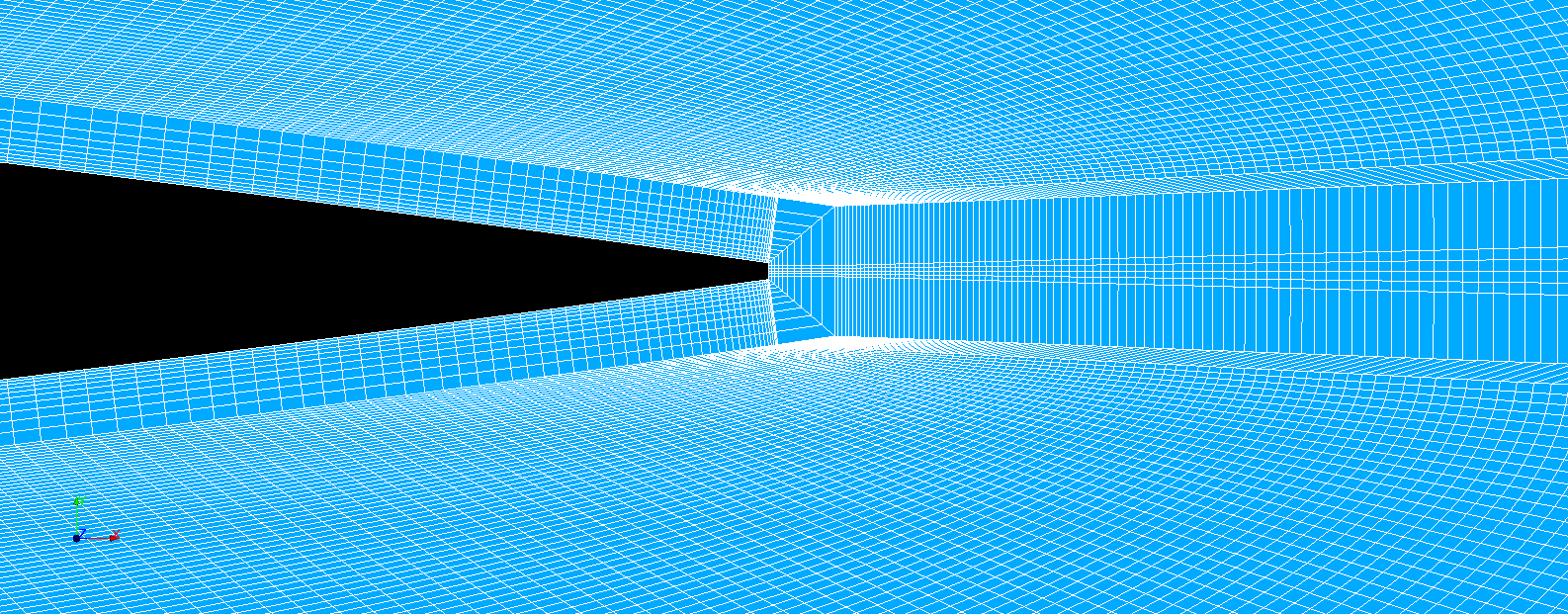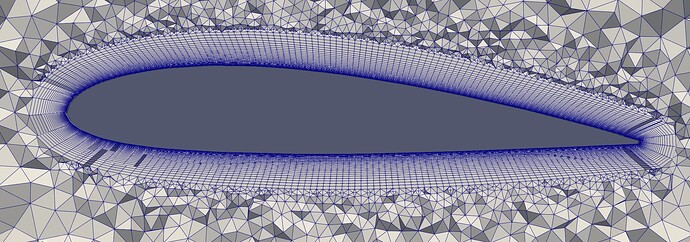I’m trying to use the viscous layers over hypothesis over an airfoil (Total thickness: 0.01 / Number of layers: 10 / Stretch factor: 1.2). But the mesh around the trailing edge and in the wake is not good. Can anyone help me?
this is a known issue, what you can do is create blocks for the boundary layer, and then use a different algorithm with growthrate etc to constrol it correctly. also next time would highly recommend to upload the study/dump script/geometry it is easier to help you that way…
Thank you for the answer. How can i create blocks for the boundary layer? And which algorithm should i use to grow it correctly? Can you help me? I’m really confused about that. About the upload of the study, this forum doesn’t accept files above 4mb and i’m having issues with this too.
Hello,
fist, when you ‘clear computed mesh’ and save the hdf file, you will save everything needed without the computed mesh, this should be way smaller in size. if is still to large you can compres or always share the python script it might help sometimes
then about the blocking,
you are doing hex meshing you need to divide your geometry into blocks (deformed cubes) in CAD and create a compound and then with the blocks you will mesh to create a conformal mesh.
here is a simple example so you understand the concept:
original geometry:
blocked geometry:
blocked geometry with blocks for boundary layer:
here is a small tutorial: https://www.youtube.com/watch?v=Fh3o5M_O1dc
for the algorithms, search for the 1D algorithms in the user manual of smesh
reagards
0012.hdf (868,8,KB)
I’m starting to understand. Now i attached my study case. I’m new in SALOME and don’t know how to create these blocks.
Andre,
I would suggest making a custom inflation layer generator. The inflation layers extrude linearly and orthogonal from the surface. Engrid is a great example.
Thank you for your reply. Could you explain me how to use it? Should i use this engrid inside Salome?
do you have a custom script to do this? I am curious about.
So I may have mispoke,
I posted a snippet of a mesh I generated that was made with custom code,
My visual studios program will generate an inflation layer for triangle, quadrangle, and hybrid surface, then I have the rest of the domain filled with tetrahedral mesh generated from gmsh.
This is not a script you can run in SALOME, I am sorry for the misleading post.




